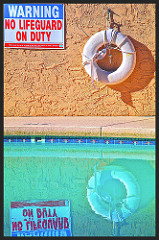 The other day we were talking about my wife’s mobile veterinary practice, and I started mapping what she does to human healthcare and reach, row, throw, go popped into my head.
The other day we were talking about my wife’s mobile veterinary practice, and I started mapping what she does to human healthcare and reach, row, throw, go popped into my head.
My wife used to be a pool lifeguard. She told me that if something happened in the water, the level of engagement was reach (can you use a pole or arm to grab the swimmer?), throw (are they close enough for you to throw a lifesaver?), row (can you take a boat or board to the swimmer?), go (if all else fails, go in after the swimmer).
I’ve been thinking quite a bit about patient engagement lately. I truly believe that the way out of the mess we have in healthcare is through deeper engagement with the healthcare system. I call it high-touch healthcare. But I don’t mean bigger hospitals and more doctors. I’ve always taken a broader, multi-channel and longitudinal view of patient engagement.
What do I mean?
The thought I’ve been developing is there is a gradient of involvement in the healthcare system from independent (for example, looking up information) to complete (for example, surgery). And there are layers to the involvement, taking in the patient, their circle of support, clinicians, clinics and hospitals, visiting caregivers, and, for me, data.
And that’s where the reach, throw, row, go comes in. Each patient is at some level of need (from none to complete dependence) and we need to decide if we need to reach (self-serve websites, mobile devices), throw (visiting caregivers, training for family members), row (clinics and urgent care), go (hospitals, hospices).
I think this thinking comes from my background in marketing and in product development where you can’t just do one thing, but need to think of the user journey, all the touch-points, and provide the right engagement for the right issue.
To me this sounds obvious, but I am never sure if healthcare systems really get it. What do you think? Do they? Do you have examples?
Image from Vasse Nicholas, Antoine